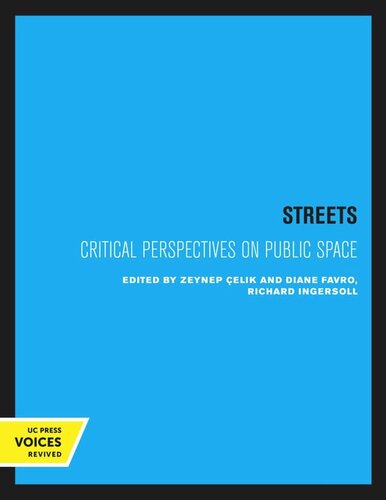

Most ebook files are in PDF format, so you can easily read them using various software such as Foxit Reader or directly on the Google Chrome browser.
Some ebook files are released by publishers in other formats such as .awz, .mobi, .epub, .fb2, etc. You may need to install specific software to read these formats on mobile/PC, such as Calibre.
Please read the tutorial at this link: https://ebookbell.com/faq
We offer FREE conversion to the popular formats you request; however, this may take some time. Therefore, right after payment, please email us, and we will try to provide the service as quickly as possible.
For some exceptional file formats or broken links (if any), please refrain from opening any disputes. Instead, email us first, and we will try to assist within a maximum of 6 hours.
EbookBell Team

0.0
0 reviewsThis collection of twenty-one essays, written by colleagues and former students of the architectural historian Spiro Kostof (1936-1991), presents case studies on Kostof's model of urban forms and fabrics. The essays are remarkably diverse: the range includes pre-Columbian Inca settlements, fourteenth-century Cairo, nineteenth-century New Orleans, and twentieth-century Tokyo. Focusing on individual streets around the world and from different historical periods, the collection is an inviting overview of the street as an urban institution. The theme of the volume is that the street presents itself as the basic structuring device of a city's form and also as the locus of its civilization. Each essay is a detailed investigation of a single urban street with unique historical conditions. The authors' shared concern regarding anthropological, political, and technical aspects of street making coalesce into a critical discourse on urban space. A fitting tribute to Spiro Kostof, this collection will be greatly admired by scholars and general readers alike.